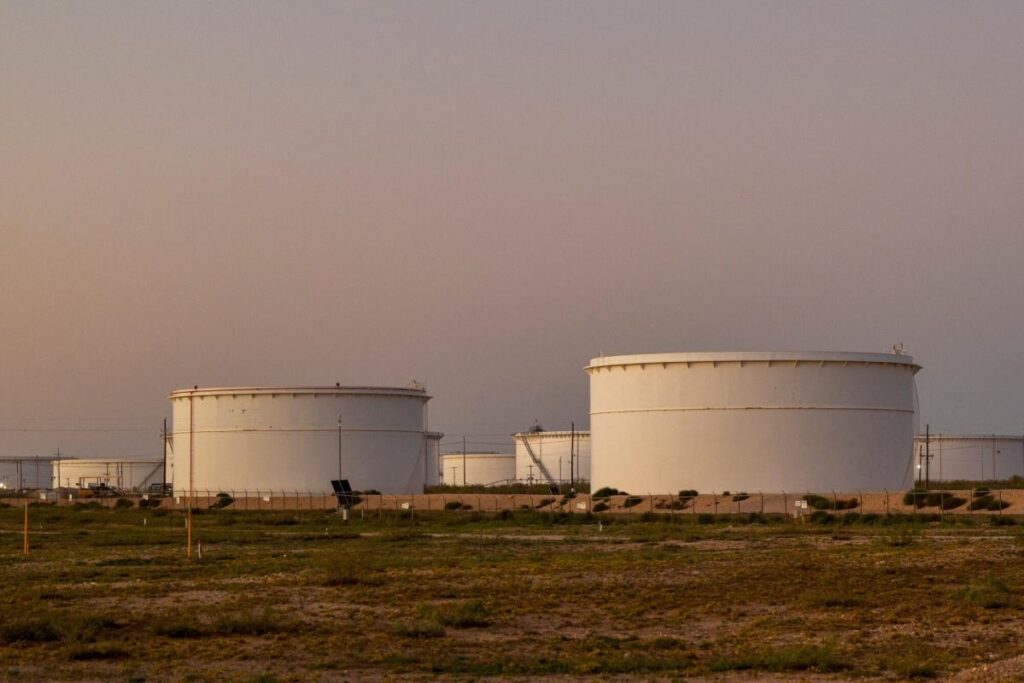Oil prices are experiencing a slight decline while still maintaining a majority of their recent increases, as traders keep a close watch on the unfolding US presidential election and the potential impact of Hurricane Rafael on production in the Gulf of Mexico. Currently, Brent crude is trading above $75 a barrel, reflecting a modest 0.6% rise on Tuesday, while West Texas Intermediate remains below $72. The looming threat posed by Hurricane Rafael is significant, with approximately 1.7 million barrels per day of output at risk, prompting Chevron Corp. to temporarily shut down some oil and gas production facilities in the Gulf region.
On the political front, early results from the US presidential election are beginning to emerge, coinciding with an increase in the value of the US dollar. Analysts suggest that the election outcome, particularly the contest between Kamala Harris and Donald Trump, could take several days to finalize. The potential implications of a Trump victory could be substantial for oil markets; analysts from RBC Capital Markets note that this may result in eased restrictions on Russian oil exports while potentially tightening sanctions on Iranian oil flows. Overall, the global crude benchmark has rebounded by about 6% since the middle of last week, after enduring a sharp decline. The price surge comes amid heightened tensions between Iran and Israel, coupled with OPEC+’s decision to delay implementing further oil production increases.
This dynamic environment has traders on alert, with some beginning to protect against the risk of oil prices soaring to $100 per barrel, particularly if military conflicts in the Middle East escalate following the election. Industry analysts highlight that upcoming US foreign policy decisions could significantly influence oil markets, especially regarding Iran. Vivek Dhar from the Commonwealth Bank of Australia points out that market participants must now consider how the OPEC+ alliance will navigate its voluntary production cuts in the longer term, amid ongoing geopolitical tensions.
In addition to external factors, the domestic oil market is also reacting to recent inventory changes, as reported by the American Petroleum Institute (API), which indicated an increase in commercial crude inventories by 3.1 million barrels in the past week. The API also noted a rise in inventories at the Cushing storage hub in Oklahoma, which serves as a key indicator for traders assessing supply levels and potential price movements in the near term. This increase in inventories may add a layer of complexity to market dynamics as traders try to gauge the balance between supply and demand.
Overall, oil prices are navigating a challenging landscape, influenced by geopolitical developments, impending US election results, and weather threats like Hurricane Rafael. The interplay of these factors creates a sense of uncertainty within the market, prompting various strategies among traders, including speculation on potential volatility and shifts in the overall supply chain. As the situation unfolds, stakeholders will be closely monitoring both domestic and international events to better understand their implications for oil prices in the coming days and weeks.
In conclusion, the current state of the oil market reflects a confluence of geopolitical tension, election uncertainties, and immediate production risks linked to severe weather. With key events on the horizon that could alter oil supply and price dynamics, traders remain vigilant and adaptive to the rapidly changing scenarios. The outlook for oil prices will largely depend on how these influences interact, including the potential shifts in US foreign policy and the ongoing deliberations within the OPEC+ alliance regarding production strategies.

